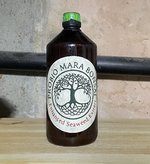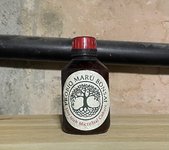The DNA of the fungus can end up in a plant even if it's not symbiotic, in the case of parasitism for instance, or general pathogeny. And the other way around too; plants can shed DNA into the environment and fungi are known to be able to incorporate (or sometimes just suck it up to break down) foreign DNA.
The method to actually know is to use isotope-labeled elements and feed it to the fungus; if it ends up in the plant within a day, they're symbiotically connected. Or maybe an immuno-assay to see if either one responds to the other. But that would only prove that the connection is, or isn't rejected. It says nothing about if it's established.
The thing with DNA is that genomes are published in a consensus way and that they are "the average" of a couple thousand different strains. For instance, there is no actual human containing the "human genome" as it's published because every single one of us has small or large mutations. In theoretical terms, based on the genome, no human is lactose intolerant or allergic to peanuts. But in reality we see both. A fungus can be of a certain group, family or strain that theoretically forms a symbiotic relationship, but in practice it might just be free-roaming even though it contains mycorrhizal genes.
That's also the point where I disagree with Dr. O'Hanlon stating that
endomycorrhiza form a bond within a seed and are never able to do it later in life. Fungi are so insanely diverse and have such an insanely large genome, nucleus counts and mutations, that I wouldn't dare to make a statement that endomycorrhiza would never be able to do it later in life. Just because we haven't found it, doesn't mean that somewhere on this globe it isn't happening. The fact that heterokaryotism is a thing, means that we can try to isolate fungal DNA, but that it's almost always contaminated with a multitude of genetically different nuclei of the same species. Isolating a monokaryotic fungus can be done, but it's rather difficult and it almost always needs to be lab-grown.
Imagine a fungus doing a genetics check with a host for instance (it's been proven that they do this, as well as immunological checks) and we take a cutting, disinfect it, grow it in a lab and then and plant it in the same soil as the parent. The fungus might very well connect to the cutting, even though it wasn't present inside that cutting's tissue in the first place. If that is possible, I can imagine it would be possible that a fungus somewhere might be bad at this check and just tries to connect with everything it touches. All it needs is a host that doesn't mind. And I honestly believe there are fungi out there that do such things. Thousands of them.
But mycorrhizal connections doesn't mean it's not a hostage situation: sometimes mycorrhizae can starve a tree from nitrogen.






